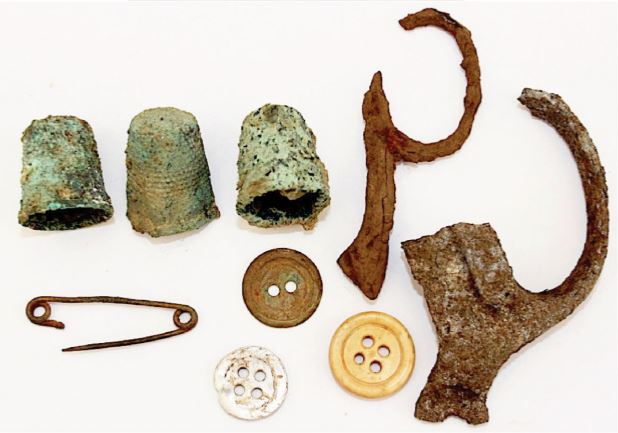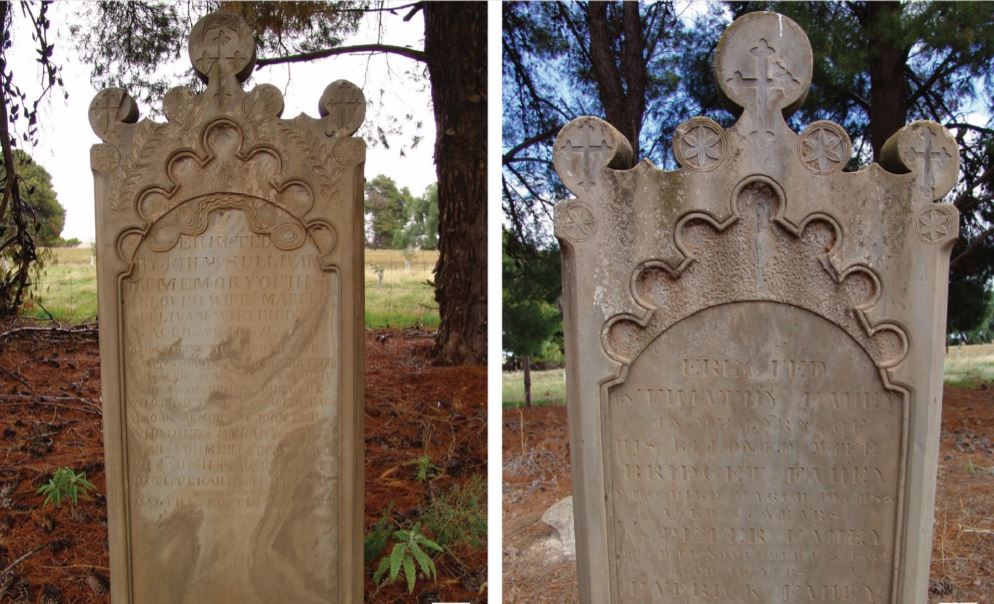
The ‘Irishness’ of Irish settlers was commonly ‘buried’ during British colonisation of South Australia, with many Irish emigrants such as farm workers and domestic help treated as second-rate citizens.
An historical archaeology study of regional South Australia by Flinders University experts gives vivid insights into the towns and communities built by Irish migrants, many of them brought here to fill labour shortages in the young colony.
Alongside Irish colonial forefathers such as George Kingston, Robert Torrens and Charles Harvey Bagot, who joined the ruling elite, were hundreds of young female orphans shipped to SA in the 19th century as domestic workers, and poor rural workers who settled in regional ‘cluster’ areas in the Mid North and Clare Valley where they made a strong Irish footprint.
Many escaping the aftermath of Ireland’s Great Famine, the Irish in the ‘free’ colony – as in other Australian settlements – were largely indistinguishable from their British counterparts except for their religion, says Flinders University archaeologist Associate Professor Heather Burke.
“Our archaeological analyses of architecture, land use, graves and personal items from three colonial sites in SA demonstrate forms of ‘Irishness’ that distinguishes the Roman Catholic and Protestant Irish from the non-Irish around them,” Associate Professor Burke says.
“While the Irish were relatively invisible within Australian colonial society, they did retain their national identity and culture in many ways and faced a degree of anti-Irish sentiment, for example the treatment of the young domestic workers who were often described as incompetent, stupid and insolent by employers.”
Irish clusters grew at Baker’s Flat near Kapunda, and towns with names like Navan, Clare, Donnybrook, Dublin, Kilkenny, Rostrevor and Tipperary. National symbols such as the Celtic cross, shamrock, harp and wolfhound, and cultural and religious practices, were signs of the Irish diasporic communities’ support for Irish political changes in the second half of the 19th century.
While male immigrants found work as mining and farm labourers and bullock drivers, the shortage of domestic servants in the 1840s and 1850s resulted in 1620 female orphans receiving assisted passages and 4000 young, single Irish women sponsored to emigrate. In the city of Adelaide, an estimated 4000 new arrivals from the northern Irish province of Ulster settled while many other Irish migrants moved away to work in the countryside.
In a new book Irish South Australia, fellow Flinders University researcher Dr Cherrie De Leiuen studies the lives of four of 4000 young Irish women who took assisted passages to the new colony where they entered a Victorian-era English settlement where landowners were known to describe their servants as uncooperative, rebellious and lazy ‘biddies’ (a corruption of Bridget).

Burke, 2010.
“The St John’s reformatory at Baker’s Flat, northeast of Adelaide, became a real centre of Irish settlement in South Australia,” says Dr De Leiuen.
“The landscape, architecture and artefacts at St John’s are expressions and reflections of the complex relationships of Catholicism, Irishness, class and gender.
“The environment of the reformatory system was actively used to produce the desirable outcome of cleaning up the streets, not only because these girls were perceived as ‘bad’ but also because they were poor, Catholic, Irish and female.”
By the end of the 19th century, the SA Irish population was still much smaller than other states, which made it “both less threatening to the Protestant majority and more unified within itself,” the researchers say in the Historical Archaeology paper, ‘In Search of the Hidden Irish: Historical Archaeology, Identity and “Irishness” in Nineteenth-Century South Australia’ (2018) , by H Burke, S Arthure, C De Leiuen, J McEgan and A Gorman.
The new book Irish South Australia: new histories and insights (Wakefield Press, RRP $39.95), edited by Flinders academics Susan Arthure, Stephanie James and Dymphna Lonergan and Fidelma Breen (University of Adelaide), is available through Book Depository. The book will be launched by Ambassador of Ireland, Breandán Ó Caollai, at Adelaide Irish Club on 1 February.
While the stories of Cornish, Scottish and German arrivals are more widely acknowledged, much of the Irish history is under-researched and not celebrated, says Dr Susan Arthure, who writes about the Irish history of Kapunda in the book.
“Ireland was a colony of Britain when South Australia was colonised, so when everyone looked the same it was easy not to acknowledge Irish identity and treat people poorly,” Dr Arthure says.
Flinders University will host an Irish women in history conference in Adelaide (9-12 December 2019) entitled ‘Foregrounding Irish Women: the Antipodes and Beyond’.

